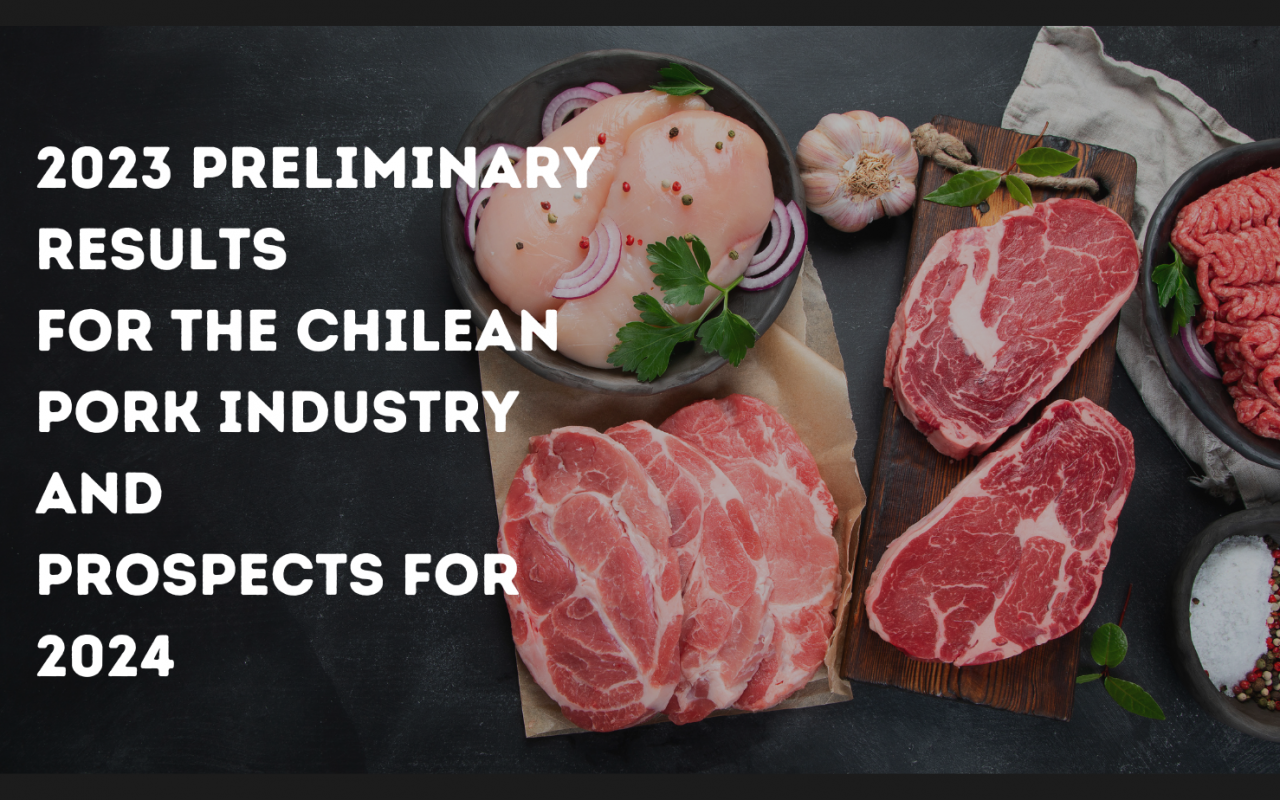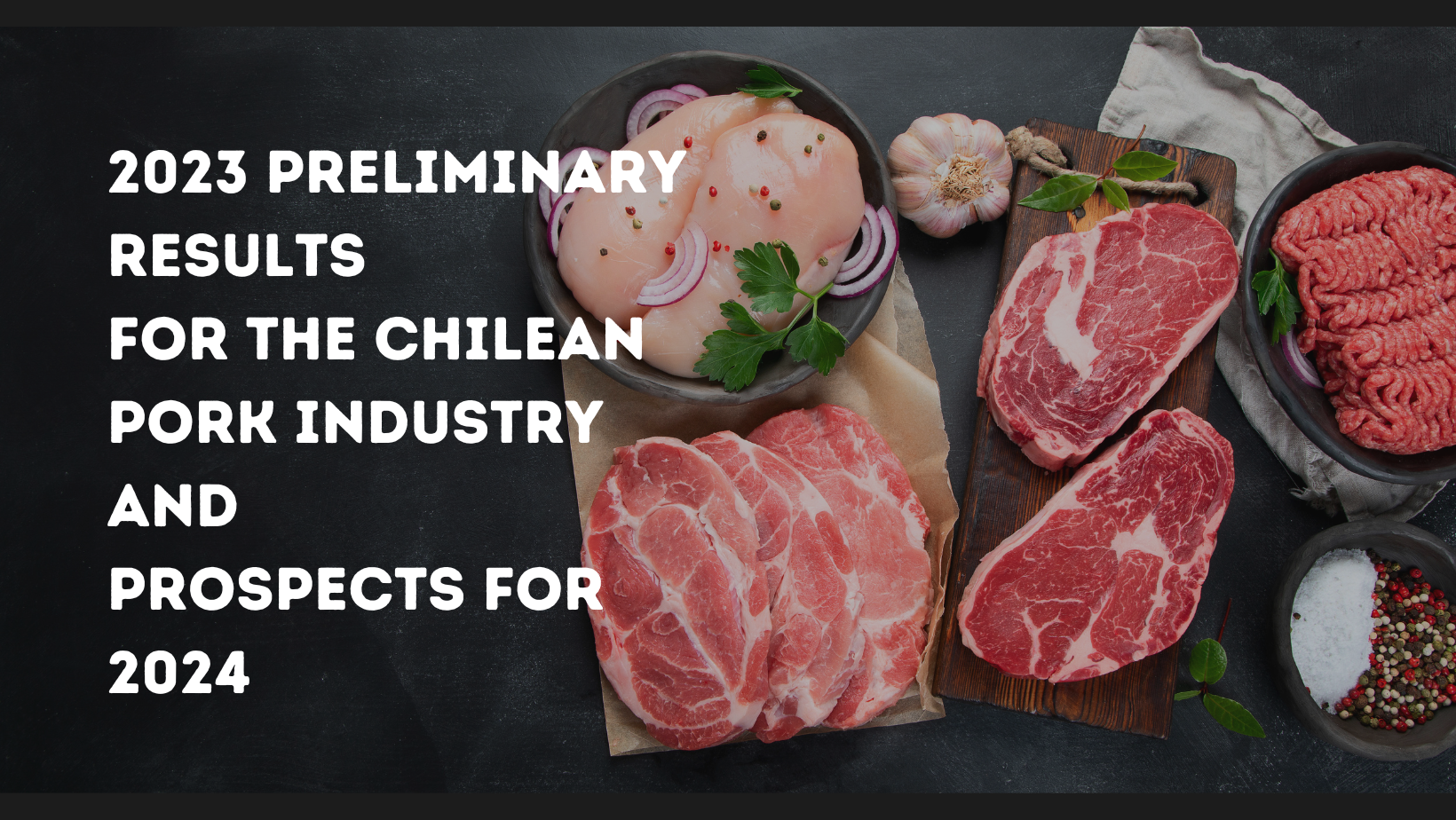
2023 preliminary results for the Chilean pork industry and prospects for 2024: A challenging outlook, say Rabobank and the USDA
Chile’s preliminary meat exports figures for 2023 show mixed results, with an increase in pork exports’ volume and a total value around 740 million USD. In addition, the latest reports from Rabobank and the United States Department of Agriculture (USDA) forecast a slow growth in production, significant regional reconfigurations, and changes in the trade of […]

Chile’s preliminary meat exports figures for 2023 show mixed results, with an increase in pork exports’ volume and a total value around 740 million USD. In addition, the latest reports from Rabobank and the United States Department of Agriculture (USDA) forecast a slow growth in production, significant regional reconfigurations, and changes in the trade of specific meats, outlining a scenario of resilience and adaptation in a complex economic and regulatory context.
In Chile, production and exports of pork in 2023 showed an upward trend. China, South Korea, and Japan are still the primary markets for Chilean pork.
Chilean Customs figures for 2023 show that the pork industry will export 296,000 tons of pork, a 12% increase in volume compared to 2022, and a value above 740 million USD, which represents a 15% drop from 2022.
Pork is still the most exported Chilean meat, representing 66% of the total volume, and 50% of the production is exported.
Juan Carlos Domínguez, president of ChileCarne, the association that represents the ChilePork brand under which Chilean pork is promoted internationally, says that “2024 should be favorable for Chilean producers after a two-year period of high production costs and a slightly lower global production, which contributes to price stabilization and should translate into higher profits for pork producers throughout the year.”
According to Rabobank’s experts, 2024 should see an ongoing demand for animal protein in spite of financial pressures and rising cost of living. A global increase in production is expected, although slower and with tight margins. This growth comes from the companies’ ability to adapt to challenges such as high prices, regulatory uncertainty, and diseases.
An improvement in some market conditions is expected for next year, such as a drop in input prices. However, structural changes will translate into additional expenses and ongoing adjustments, opening both opportunities and risks. Companies will have to adapt to these changes to stay successful, focusing on their strengths, transitions in the supply chain, and strategies adapted to a high-price environment.
Rabobank provides an outlook for the primary pork and poultry exporting markets:
- Mexico offers slightly positive prospects for pork, while the United States should see a drop in beef production and a rise in poultry.
- Europe will continue to experience pressure on the production of all meats due to diseases and changes in production systems and regulations.
- China should see a steady growth in poultry production, but some pressure in the pork and beef markets is expected.
- Brazil should see all meats grow, driven by exporting opportunities.
- Southeast Asia: Growth thanks to the economic recovery and relief from disease.
On the other hand, the latest forecasts from the USDA show a mixed outlook for global pork production and trade in 2024. These forecasts reflect global and regional trends and are key for understanding the dynamics of this relevant-industrial sector.
According to the USDA, global pork production in 2024 will remain stable at 115.5 million tons. However, this apparent balance hides significant regional changes. The European Union (EU) and China will see a drop in production, in contrast to a significant increase in Brazil, Vietnam, and the United States.
China will see a 1% drop in production due to a weak domestic demand and the significant losses of 2023. Vietnam, on the other hand, will grow its production by 5% thanks to the recovery of domestic demand and higher efficiency.
Global pork exports will grow 2%, with Brazil gaining ground in markets such as Japan and Mexico. The United Kingdom will see a 9% increase in exports thanks to lower input costs and higher pork prices.
In summary, 2024 poses a complex and mixed scenario for the global animal protein market. Adaptation to structural changes and the ability to navigate a challenging economic and regulatory environment will be critical for businesses’ success. The Rabobank and USDA reports provide valuable insight to understand the future dynamics of this critical market.
